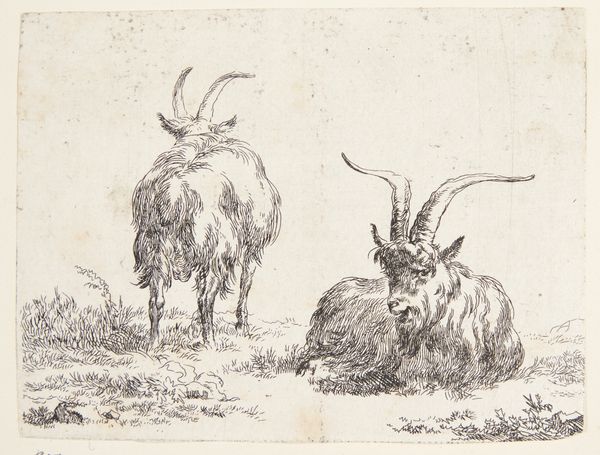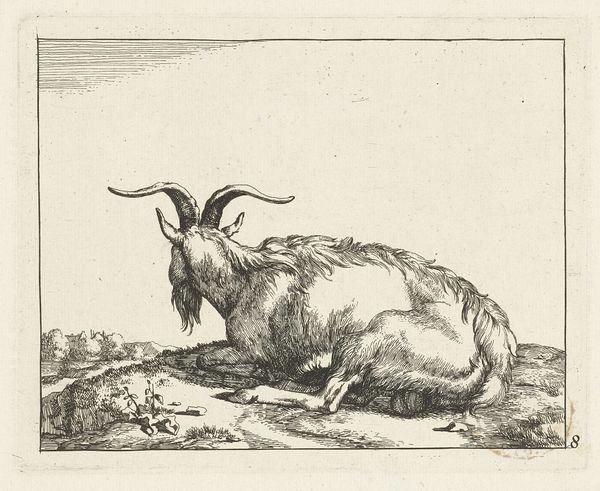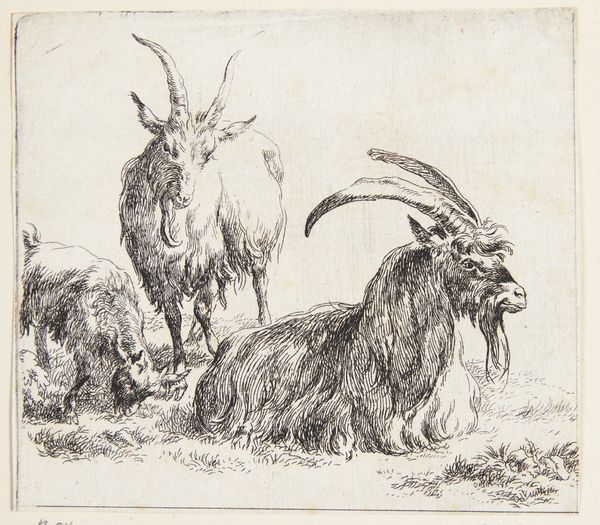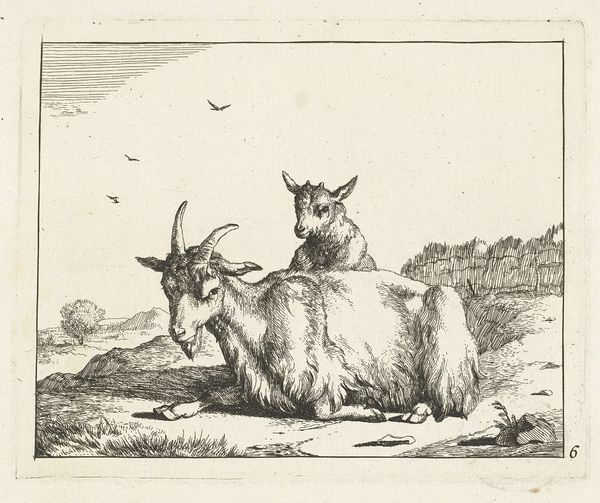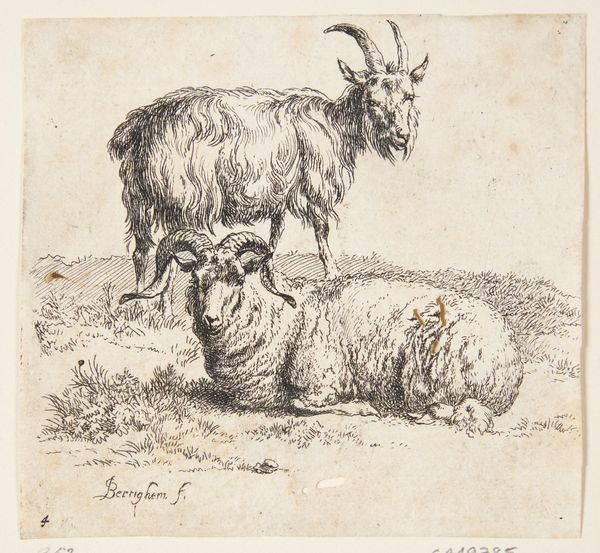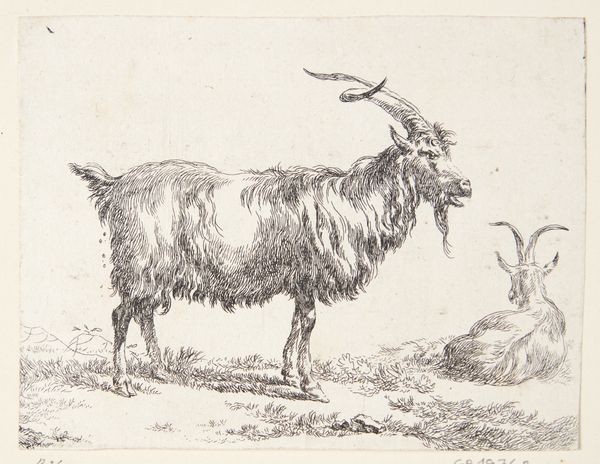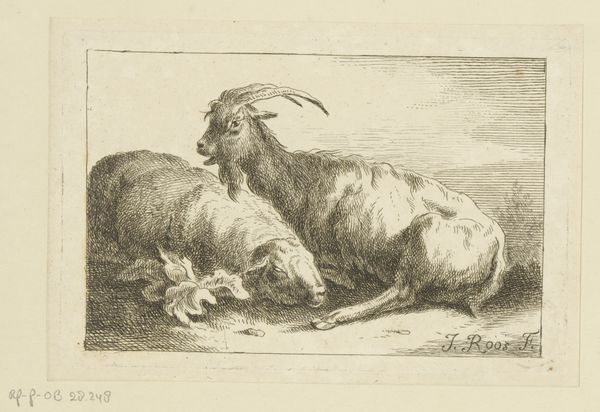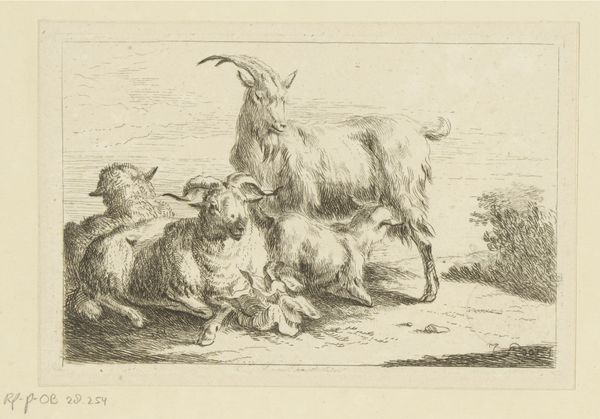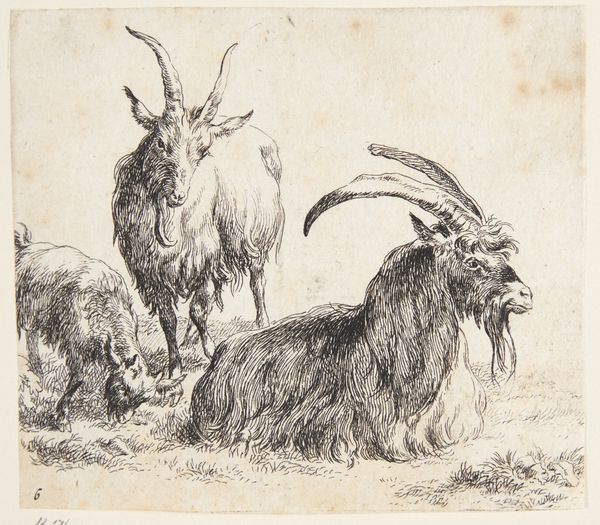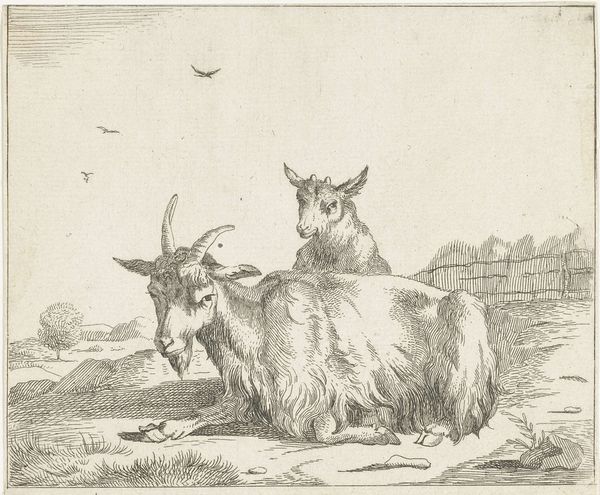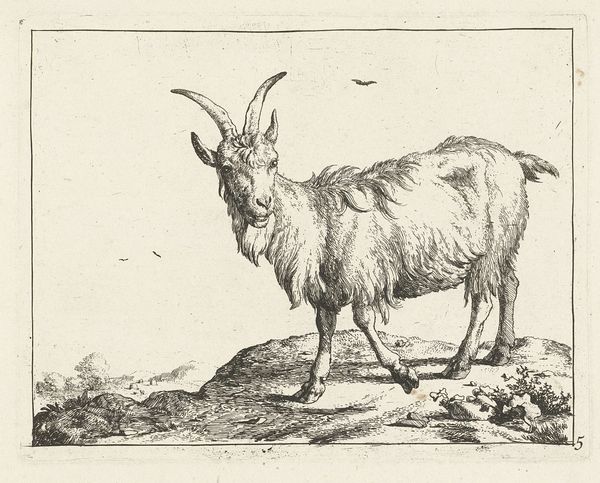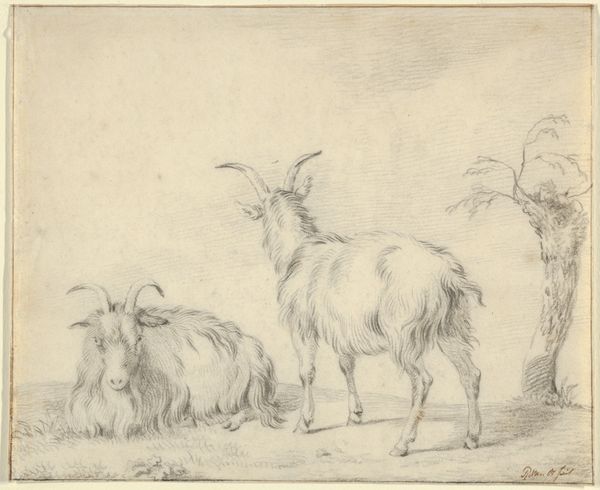
drawing, ink
#
drawing
#
animal
#
landscape
#
ink
#
realism
Dimensions: height 109 mm, width 135 mm
Copyright: Rijks Museum: Open Domain
Isaac Schnebbelie created this etching, "Twee bokken," around the turn of the 19th century, using a technique called aqua forti, which is Italian for "strong water," or nitric acid, to bite into the metal plate. Notice how Schnebbelie uses line and texture to describe the two goats. The goat in the foreground is lying down. Its wooly body is suggested through the thickness and directionality of the etched lines, which curve and cross to create a tactile sense of its shaggy coat. The use of hatching and cross-hatching, a technique that employs closely spaced parallel lines, conveys volume and depth, while also giving a sense of the goat's posture. The formal contrasts and similarities between the two goats—one reclining, the other standing, invite us to consider how Schnebbelie has structured our gaze and manipulated our perception of depth through simple, yet effective compositional choices. In this way, the arrangement emphasizes the inherent structure of the image.
Comments
No comments
Be the first to comment and join the conversation on the ultimate creative platform.
